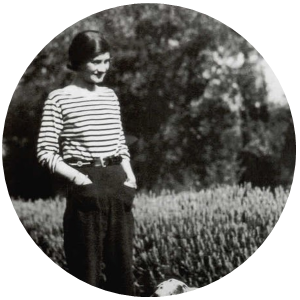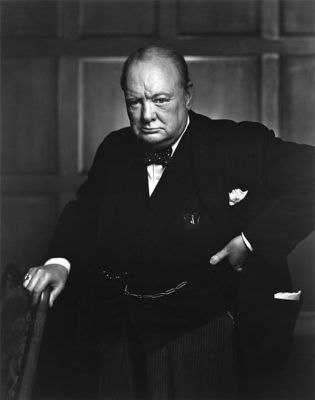Five things you should know about Coco Chanel
 There is no doubt that Coco Chanel had incredible fashion sense—as well as a gift for identifying what women of the world wanted.
There is no doubt that Coco Chanel had incredible fashion sense—as well as a gift for identifying what women of the world wanted.
She inspired them to ditch their suffocating corsets and cut their hair short. To this day, her name is synonymous with the most glorious images of French taste and elegance, and her petite robe noire has become synonymous with style. The little black dress was positioned as long-lasting, versatile, affordable, and accessible to the widest possible market.
Her signature suit, which has a collarless jacket trimmed with braid and a straight skirt, continues to be adored and is still produced in its millions.
In the nineteen twenties, she created Chanel No. 5 and launched it with the slogan, “A very improper perfume for nicely brought-up ladies.” It has been on the list of worldwide bestselling fragrances ever since and is now known by the industry as a “timeless” perfume. Marilyn Monroe once said it was the only thing she wore in bed.
So, what else should you know about Coco Chanel?
1. Coco Chanel was born in poverty
She came into the world in 1883 in a hospice for the poor in the Loire Valley but went on to become the queen of a gargantuan Haute Couture and fragrance empire.
Her parents were not married and when her mother died. She was therefore brought up in an orphanage run by Roman Catholic nuns. They taught her to be a seamstress, and this is where it all began.
2. Coco Chanel was a social climber par excellence
 As her personal fortunes rose, she turned her attention to making serious inroads into British high society.
As her personal fortunes rose, she turned her attention to making serious inroads into British high society.
She got right to the top befriending the likes of the Duke of Westminster, Hugh Grosvenor- one of the world’s wealthiest men- and the soon to become Prime Minister, Winston Churchill. Both friends worth knowing.
The Duke bought her a home in Mayfair and a parcel of land on the French Riviera. Churchill got her out of a very serious situation at the end of the war.
She even hobnobbed with the future King of England, Edward VIII. He disliked Jews, was an ardent Hitler supporter, and even met the Fuhrer at his Berghof retreat.
3. Coco Chanel was a dedicated anti-Semite
During the German Occupation, she moved into the Ritz Hotel in Paris where she took up with Baron von Dincklage, a senior officer in the Abwehr, or German Military Intelligence. The Baron reported directly to Goebbels, Nazi Minister of Propaganda.
Recently declassified French and German documents now confirm that she became a spy. She operated in centres like Lisbon and Berlin, where she attended clandestine meetings with high ranking Germans. It is now believed that she even met Heinrich Himmler, the main architect of the Holocaust, when she was in the Nazi capital.
4. Coco Chanel escaped retribution
Liberation brought with it rough justice in the form of épuration. Vigilantes dealt with collaborateurs horizontales for sleeping with the enemy. Their heads were shaved—and sometimes tattooed—for having cohabited with German soldiers.
Many of these victims were young mothers whose husbands were in German prisoner-of-war camps. They often had no means of support. Sometimes, their only hope of obtaining food for their families was to accept a liaison with an enemy soldier.
Although Chanel was arrested, she escaped retribution and was out of custody in twenty-four hours. Most historians now believe that Winston Churchill intervened to get her released.
5. Coco Chanel’s life and exploits go even deeper…

Despite her defenders and apologists, there is no doubt that she virtually fired 4,000 of her empire’s employees at the outbreak of war.
At first her stake in the Chanel empire was insignificant. But she used Nazi legislation to seize company assets stating that the complete ownership of Parfums Chanel should be ceded to her as the business had been legally “abandoned” by its Jewish owners.
And it should never be forgotten that Chanel fraternised with senior Nazis officers throughout the Occupation. When most of Paris was rummaging through trash in a constant search for food, and when gendarmes were rounding up Jewish families—including children— to send to the gas chambers in death camps in Germany, she was living in the lap of luxury at one of the world’s smartest hotels.
Like Lady Macbeth, who lamented that “All the perfumes of Arabia will not sweeten this little hand,” no amount of Chanel No. 5 can cleanse Gabrielle “Coco” Chanel’s tarnished reputation.
Did you know about Coco Chanel’s collaboration with the Nazis? We’d love to read your thoughts and reflections in the comment box below!
Image credits
- Gabrielle Chanel, via Wikipedia
- Sir Winston Churchill, via Wikipedia
- Hotel Ritz Paris, by Jaume Meneses via Wikipedia
- Chanel No.5 perfume, via Wikipedia








I never liked Chanel No. 5 but I had no idea of this aspect of Coco Chanel’s life. Fascinating information. And it puts any admiration for her in perspective. Thanks for the article
Bonjour Jacquib,
Thanks for reading my article on Coco Chanel and for your comments.
Unfortunately there were lots of skeletons in lots of cupboards during that tragic period. Here are just a few:
Louis Renault manufactured over 34,000 vehicles in his factories for the Germans.
Alfred Cortot played the piano for them.
Louis Vuitton’s family business actively aided the Vichy government.
André Zucca worked as a photographer and correspondent for “Signal” the Wehrmacht propaganda magazine.
In 1942 Maurice Chevalier was named on a list of French collaborators.
Arletty was imprisoned in 1945 for her wartime liaison with a German Luftwaffe office
Tin Tin’s creator, Hergé, worked for Le Soir, an anti-semetic newspaper which collaborated with the German occupiers.
And the jury is still out regarding the collaboration of many others, including—wait for it—Edith Piaf.
However, it should never be forgotten that living in occupied France was both dangerous and complicated. And cruel and barbaric acts were routinely meted out by both sides.
Thanks again for your comments.
Ray